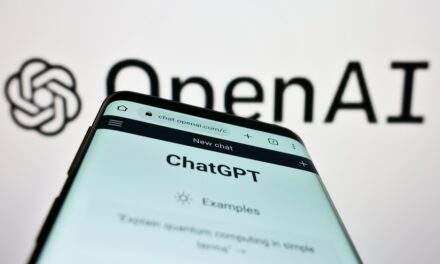The first innings of the artificial intelligence (AI) revolution have been dominated by a company called OpenAI…
That’s the company behind ChatGPT, the Large Language Model (LLM) platform that recently took the world by storm, reaching 100 million users just two months after it was released in November of 2022.
ChatGPT was the first direct interaction most Americans have ever had with that kind of AI system, and it immediately changed what we all thought was possible using this new technology.
The platform was such an overnight success that it attracted a $10 billion investment, and triggered a whole new wave of AI research across the tech sector.
But starting as soon as May 5, we could see the lion’s share of profits shift from “Open AI” platforms like ChatGPT — to a whole new breed of “Closed AI” breakouts.
Here’s the difference…
Like the company’s name implies, OpenAI (and its multiple ChatGPT variants) are based on what’s called “Open AI” or “open source” code.
In other words, the actual system code — the “meat and potatoes” of an AI program like ChatGPT — has long been available to anyone.
Computer geeks love these kinds of open-source platforms because they allow for rapid innovation early on. Anyone and everyone can contribute and experiment with the platform.
But Open AI systems make it difficult to get a profitable edge. Because others can always just reverse-engineer your breakthroughs as easily as copying your homework in math class.
That’s why OpenAI started shifting to “Closed AI” systems early last year.
Unlike Open AI systems which are freely accessible to anyone, Closed AI works more like a conventional tech company. You don’t have competitors glancing over your shoulder 24/7, so you’re free to invest more time, energy and money into making major breakthroughs.
ChatGPT has only recently become a Closed AI system.
So it could take years of hard work and research for its creators at OpenAI to build up their own competitive advantage in the field.
Meanwhile, there’s one small tech company that’s been quietly building its own Closed AI advantage for more than two decades now.
How Closed AI Safeguards National Security
Closed AI was born more than two decades ago, when a handful of tech leaders teamed up with the Central Intelligence Agency (CIA) to found a new company with just one goal:
To prevent another terrorist attack on the scale of the September 11 attacks.
Due to the top-secret nature of its work, this company operated in the shadows until 2010.
That’s when reports started to surface that its AI-based technology was used to track down and capture high-value targets in Iraq.
Since then, the company has grown rapidly — booking over $1 billion in contracts with 30 different government agencies, including a $250 million deal with the Pentagon.
In total, this company is working with the Department of Defense on 685 different AI-related projects, including:
- A $463 million contract to create AI-driven solutions to help U.S. Army commanders make smarter and easier decisions.
- A State Department contract worth $100 million to use AI to monitor the health of the diplomatic corps.
- A $178.4 million contract through one of its subsidiaries to develop new AI-driven systems that can quickly gather and analyze critical sensor information.
With these kinds of tasks, an Open AI system has simply never been an option. These systems have to be Closed AI as a matter of national security.
Confidentiality is paramount when you’re dealing with terrorist threats and foreign spies. So every single one of this company’s breakthroughs has been top secret.
That’s why it’s one of just three companies in the world with a security clearance from the Department of Defense.
But now that the wider AI Revolution is underway, this company is beginning to turn its tremendous Closed AI advantage toward commercial applications.
That means using the same advanced technology that safeguards our nation to develop new drugs for the National Institute of Health…
To actively detect and track ongoing Medicare scams…
Or to fight identity crime and cybercrime for Fortune 500 businesses.
This is a company with a weapons-grade advantage in terms of AI. And it’s going to take over the AI Revolution before most investors even realize it.
One of tech’s leading visionaries is even calling it “The Next Google.”
Which is why I’m urging my readers to invest in this business … and to invest before May 5.
You can find all the details right here.
To good profits,

Chief Investment Strategist, Money & Markets









